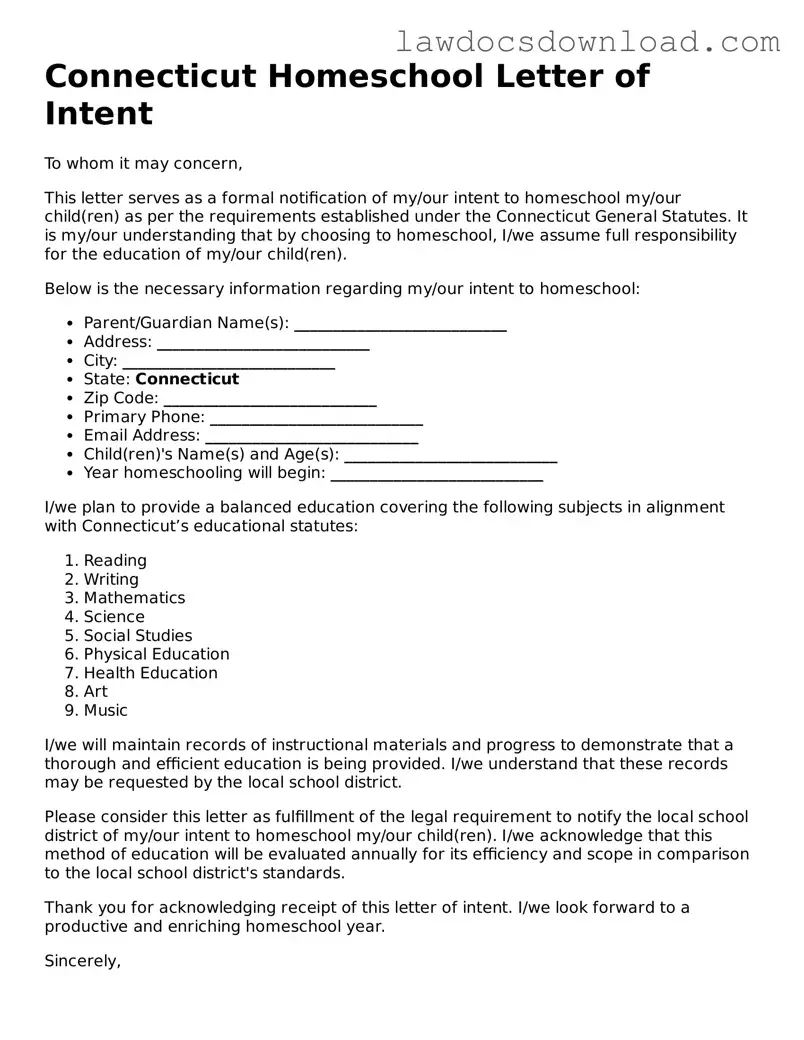Connecticut Homeschool Letter of Intent
To whom it may concern,
This letter serves as a formal notification of my/our intent to homeschool my/our child(ren) as per the requirements established under the Connecticut General Statutes. It is my/our understanding that by choosing to homeschool, I/we assume full responsibility for the education of my/our child(ren).
Below is the necessary information regarding my/our intent to homeschool:
- Parent/Guardian Name(s): ___________________________
- Address: ___________________________
- City: ___________________________
- State: Connecticut
- Zip Code: ___________________________
- Primary Phone: ___________________________
- Email Address: ___________________________
- Child(ren)'s Name(s) and Age(s): ___________________________
- Year homeschooling will begin: ___________________________
I/we plan to provide a balanced education covering the following subjects in alignment with Connecticut’s educational statutes:
- Reading
- Writing
- Mathematics
- Science
- Social Studies
- Physical Education
- Health Education
- Art
- Music
I/we will maintain records of instructional materials and progress to demonstrate that a thorough and efficient education is being provided. I/we understand that these records may be requested by the local school district.
Please consider this letter as fulfillment of the legal requirement to notify the local school district of my/our intent to homeschool my/our child(ren). I/we acknowledge that this method of education will be evaluated annually for its efficiency and scope in comparison to the local school district's standards.
Thank you for acknowledging receipt of this letter of intent. I/we look forward to a productive and enriching homeschool year.
Sincerely,
________________________________
Parent/Guardian Signature
Date: ___________________________
